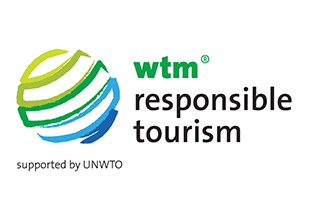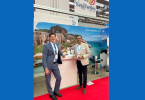The first panel session of the day at World Travel Market (WTM) London explored tourism’s efforts to address its carbon and water footprints. Speaking by video from Australia, Professor Susanne Becken from Griffith University said that tourism continues to base its approach to meeting these challenges on what she called the ‘fallacy of incremental change’. She explained that this means the industry focuses on gradually improving the efficiency of how it works while it keeps growing its overall impact, rather than making absolute reductions in its impact. “We are like dieters who give up fizzy drinks but keep eating more and more food,” she added.
Becken’s sense of urgency was amplified by John Proctor, Chief Executive of the UK’s Green Tourism, who said that while the accommodation sector has to do its part, the real issue is the costs from transport, in particular aviation.
In a session titled ‘Kerala’s Responsible Tourism Mission’, Dr Venu, the state’s Principal Tourism Secretary, opened by explaining that the state’s responsible tourism journey has been defined by developing a community tourism network so as to “include the local community not just as a participant, or even a beneficiary, but as a leader.”
Jose Dominic, managing director of CGH Earth, shared the story of Coconut Lagoon, an incredibly sustainable property his company runs in the village of Kumarakom, which is itself a pioneer in Kerala’s responsible tourism mission. He explained how the commitments CGH Earth has made when it comes to operating its lodges are not just the more responsible way to act, they have also improved profitability, since their businesses stand out from the crowd and offer remarkable experiences. For example, he explained that Coconut Lagoon is zero waste, has its water needs served entirely from rainwater harvesting, and is now even preserving and reintroducing the endemic Vechur cow species, while engaging its guests in all these stories. In an echo of Susanne Becken’s arguments from the earlier session, he added that it was essential for tourism to move away from a business model where companies commit two per cent to Corporate Social Responsibility and ‘good works’, which he said just means they can just do whatever they want with the rest of their business. Instead, he argued, we need to design companies to be sustainable and “purposeful” in the way they operate their core business.
In a session on ‘What’s Next for Certification?’, Professor Xavier Font from the University of Surrey, said that the process needs to be more rigorous. ‘If I look at a certification scheme where 40-50% of businesses are getting gold then it is not worth getting,” he said, “and the standards of the certification needs tightening.” Soren Stober, Commercial Director for the Travelife certification scheme at ABTA, said that one positive sign was that companies are now paying attention to issues such as modern slavery, and that the Travelife scheme now assesses these social impacts as well as focusing on standard environmental data. However, he expressed concern that: “sadly we are still far away from saying sustainable certification has found its place in the industry,” adding, “at the moment it is just an add on.”
Stober’s concern was shared by John Proctor, CEO of the UK-based certification scheme Green Tourism, who estimated that If you added up all the certified tourism businesses in the world, it would still probably only be around 10,000 properties. He insisted certification was essential to provide a roadmap for the industry to move in the right direction, “otherwise we are doomed,” he commented, adding “It’s only one corner of one room where we talk about carbon – the industry should be absolutely ashamed.”
In a crowded session exploring: “Coping with success, managing overtourism”, Jonathan Keates, Chair, of Venice in Peril, said that cruise ship numbers are a major and growing problem, with the pollution from their engines being even more dangerous to the historic buildings of the city than even the backwash from their engines. Nonetheless, he said that “the real challenge to the continuity of the city as a viable urban entity is tourist saturation”. In particular, he highlighted the “intolerable concentration of human numbers of tourists”, especially around St Marks and the Rialto. He said that it wouldn’t be long before it might be necessary to have some sort of turnstile type, ticketed system to regulate the numbers into these most popular places.
In the same session, Carlos Vogeler, UNWTO Executive Director for Member Relations, said that as we look at how to address overtourism, we need to remember that the number of tourists grows by almost 4% a year, meaning that while we are at around 1.2 billion international tourists today, in a decade that number will have grown by 50% and be at 1.8 billion. Furthermore, he added, we have to multiply that number of tourists by a factor of five to account for all of the domestic tourists as well, who, he pointed out, impact upon overtourism in crowded areas they visit as much as international tourists.
Towards the end of the day, in a session on Tourism and Place Management, the sustainable tourism consultant Cillian Murphy spoke of the importance of preserving the places people love to come and visit, in order to have a long term sustainable tourism industry. He finished with a quote from the environmental writer George Monbiot, which read: “It is not enough to challenge the old narrative, however outdated and discredited it may be. Change only happens when you replace one story with another.






